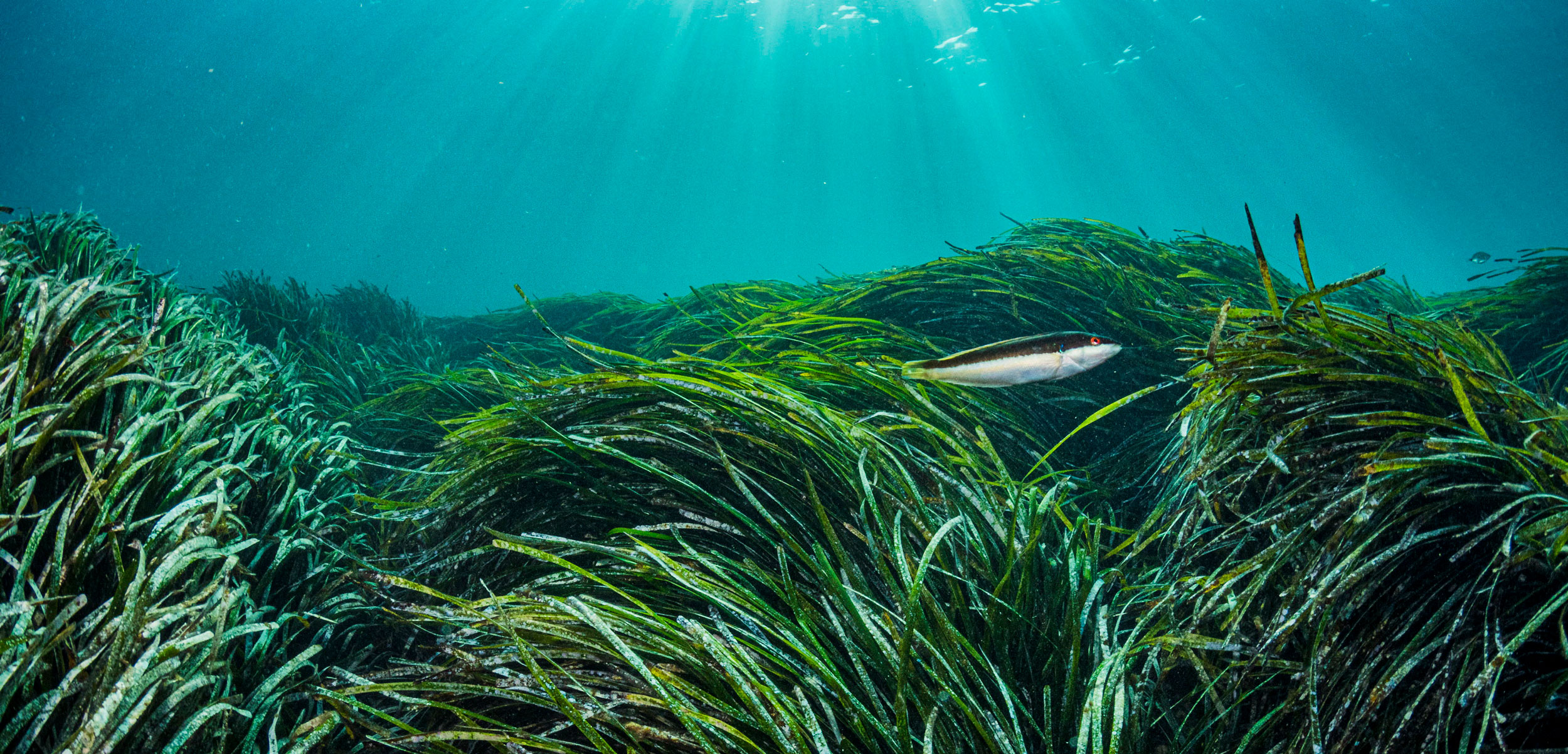Scientists Found a Nitrogen-Fixing Seagrass
Adopting a strategy that is all but unheard of in the sea, this seagrass produces an essential nutrient the same way peas do.
Article body copy
The meadows of luscious green seagrass that dot coastal regions around the world are gaining recognition as important marine habitats and carbon sinks, but there is still a lot we don’t know about how these marine plants live. For example, scientists have assumed that seagrasses, like many other marine plants, take up important nutrients like nitrogen directly from the surrounding seawater and sediment. But a new study shows that seagrasses actually use a technique to acquire nitrogen that is prevalent among beans, peas, and other legumes on land, but is exceedingly rare in the ocean: they have a symbiotic relationship with nitrogen-fixing bacteria.
In the Mediterranean Sea, Neptune seagrass grows in vast meadows. Yet nutrients, says Wiebke Mohr, a marine microbiologist at the Max Planck Institute for Marine Microbiology in Bremen, Germany, are virtually absent in the water. “We knew it must have a different source of nutrients,” she says.
Mohr and her colleagues knew that nitrogen-fixing bacteria—bacteria that convert nitrogen gas into ammonia, a form of the element that plants can use—would be involved in some way, either living on the surface of the plants’ roots or in the surrounding sediment. So that’s where Mohr and her colleagues went looking for them. But what they found was unexpected—bacteria, yes, but living inside the plants’ roots, not outside them.
The team began studying the new bacterium, which they named Celerinatantimonas neptuna after its host, the Neptune seagrass. They were surprised to find that the relationship between the bacteria and the plant was very similar to what is seen in legumes on land. The bacteria produce ammonia and, in return, the bacteria get sugars produced by the photosynthesizing seagrass to eat and a safe place to live inside the seagrass’s roots.
“It was a surprise, but it makes a lot of sense,” says Mohr. “Seagrasses are land plants that migrated back into the oceans.”
The symbiosis is an example of convergent evolution, when organisms independently develop the same way to overcome an obstacle.
Just as the ancestors of legumes adopted soil bacteria to be able to live in nitrogen-poor soils, the ancestors of seagrass adopted a marine bacterium when they moved into the ocean that could help them overcome the lack of nitrogen in their new environment.
“Two unrelated plant groups solved the same problem in a similar way, using different bacteria,” says Mohr. It also suggests that the association between plants and nitrogen-fixing bacteria is much older than we thought: legumes evolved just 60 million years ago, while seagrasses arose 100 million years ago.
Benjamin Jones, one of the founders of the environmental charity Project Seagrass, says having a better understanding of the biology of seagrass will help with protection and restoration efforts. “If we know how they manage to persist in low-nitrogen environments, we can restore them in places we didn’t think were possible before,” he says. “It’s a new way to think about where to put them.”

